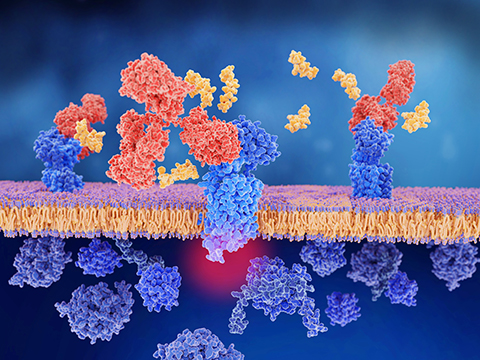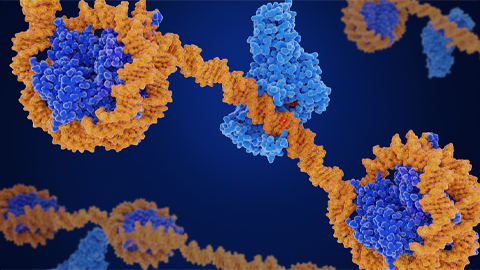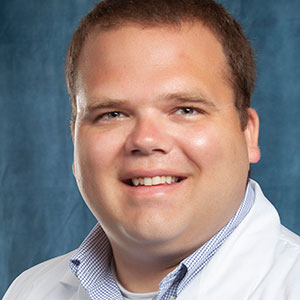Exploring lipid metabolism: A journey through time and innovation
Year after year, groundbreaking research in lipid metabolism fuels new discoveries, transforming our understanding of cellular function and unlocking potential treatments for metabolic disorders and neurodegenerative diseases. At the American Society for Biochemistry and Molecular Biology annual meetings, scientists come together to share the latest breakthroughs — each study building on the last — to push the boundaries of what’s possible in basic research and clinical innovation.

Membrane dynamics and lipid–protein interactions
Lipid–protein interactions are central to maintaining cell membrane integrity, signaling, and protein activity. Disruptions in these interactions have been linked to diseases like Alzheimer's, cardiovascular disorders and autoimmune diseases, making them crucial targets for therapeutic research.
One notable 2022 abstract used cryogenic electron microscopy to explore ABHD5, a regulator of lipid homeostasis. This research revealed how ABHD5 interacts with lipids and regulates adipose triglyceride lipase activity, which is essential for lipid breakdown and energy balance. Mutations in ABHD5 can lead to nonalcoholic fatty liver disease, or NAFLD. Therefore, this research lays a foundation for potential NAFLD gene therapies.
In the same year, an abstract on NAFLD investigated oxidized phospholipids that are recognized by an antibody. The researchers used a viral vector to express the antibody in the liver, which protected mice from liver damage and fibrosis. This suggests that oxidized phospholipids could serve as biomarkers for NAFLD and offers new therapeutic possibilities targeting lipid abnormalities.
Building on foundational phospholipid research from previous years, a 2024 abstract examined how extracellular crowding agents affect the membrane binding of antimicrobial peptides like Buforin II. This discovery informs researchers on how to design more effective peptides to combat pathogens.
Another 2024 abstract explored lipid rafts — specialized membrane regions — and their impact on the human follicle-stimulating hormone receptor, or hFSHR, crucial for fertility. Mutations in the receptor motif that binds the membrane protein caveolin disrupted signaling, impairing spermatogenesis. These findings emphasize the importance of lipid–protein interactions in cellular function and health.
These studies advance lipid science by examining how lipids and proteins interact to influence cellular function and disease progression. Lipidomics research highlights the diagnostic potential of specific lipid species, while studies on caveolae — lipid-rich membrane domains — demonstrate how membrane structure regulates signaling pathways. Furthermore, research on oxidized phospholipids connects these molecules to oxidative stress in NAFLD, while investigations into the membrane protein caveolin reveal its role in controlling stress-related signaling.
By targeting these lipid–protein interactions, researchers may unlock new therapeutic strategies for NAFLD, reproductive disorders and endothelial dysfunction.
Future of lipid science
Lipid metabolism research is evolving quickly, with breakthroughs reshaping our understanding of cellular function, disease progression and treatment options. Whether you're a researcher, clinician or science enthusiast, ASBMB meetings provide a unique opportunity to engage with the latest advancements in lipid science.
Stay up to date with the field and join us in shaping the future of lipid metabolism research. Register for the ASBMB annual meeting and be part of this exciting journey.
For lipid-focused sessions at #ASBMB25, check out the symposium on lipids and membranes, organized by Gerry Hammond of the University of Pittsburgh and Judith Simcox of the University of Wisconsin–Madison.
Enjoy reading ASBMB Today?
Become a member to receive the print edition four times a year and the digital edition monthly.
Learn moreFeatured jobs
from the ASBMB career center
Get the latest from ASBMB Today
Enter your email address, and we’ll send you a weekly email with recent articles, interviews and more.
Latest in Science
Science highlights or most popular articles

CRISPR epigenome editor offers potential neurodevelopmental gene therapies
Scientists from the University of California, Berkeley, created a system to modify the methylation patterns in neurons. They presented their findings at ASBMB 2025.

Finding a symphony among complex molecules
MOSAIC scholar Stanna Dorn uses total synthesis to recreate rare bacterial natural products with potential therapeutic applications.

E-cigarettes drive irreversible lung damage via free radicals
E-cigarettes are often thought to be safer because they lack many of the carcinogens found in tobacco cigarettes. However, scientists recently found that exposure to e-cigarette vapor can cause severe, irreversible lung damage.

Using DNA barcodes to capture local biodiversity
Undergraduate at the University of California, Santa Barbara, leads citizen science initiative to engage the public in DNA barcoding to catalog local biodiversity, fostering community involvement in science.

Targeting Toxoplasma parasites and their protein accomplices
Researchers identify that a Toxoplasma gondii enzyme drives parasite's survival. Read more about this recent study from the Journal of Lipid Research.

Scavenger protein receptor aids the transport of lipoproteins
Scientists elucidated how two major splice variants of scavenger receptors affect cellular localization in endothelial cells. Read more about this recent study from the Journal of Lipid Research.


